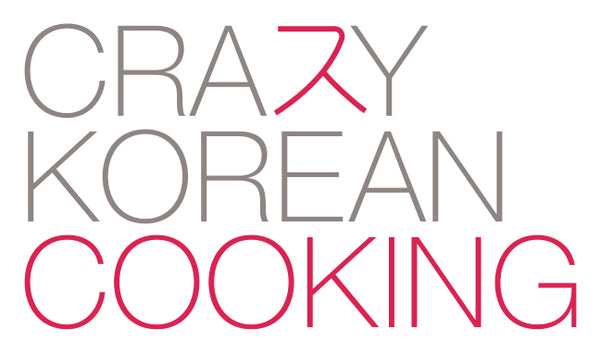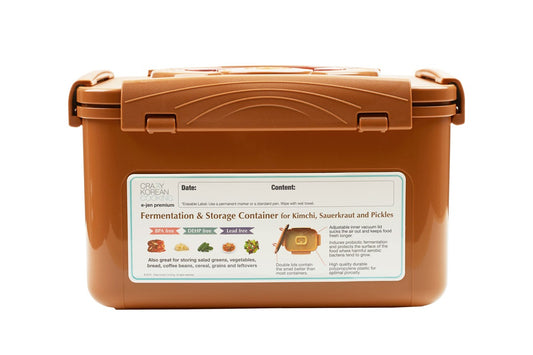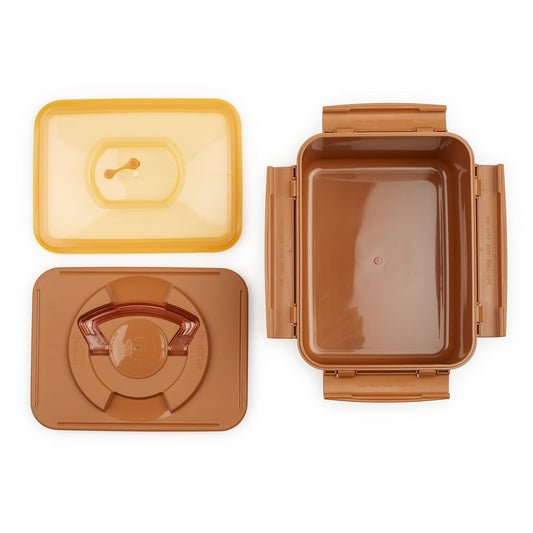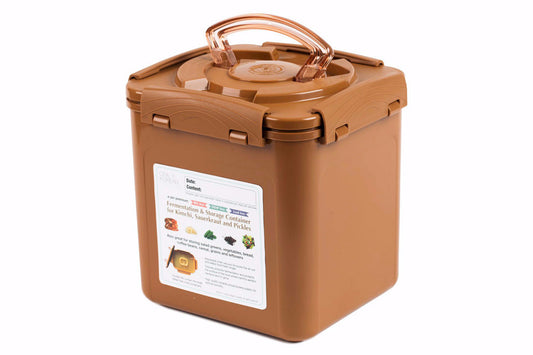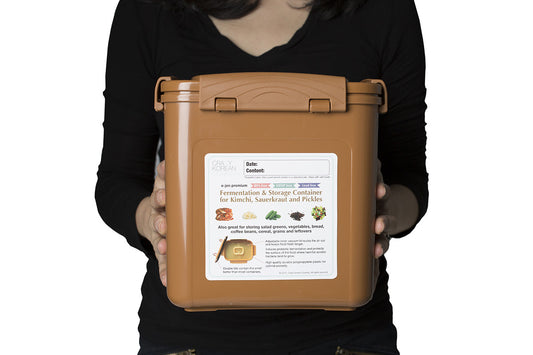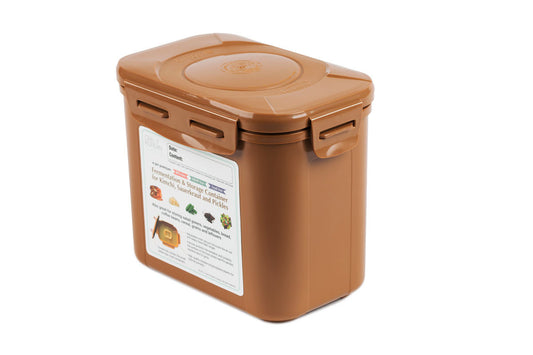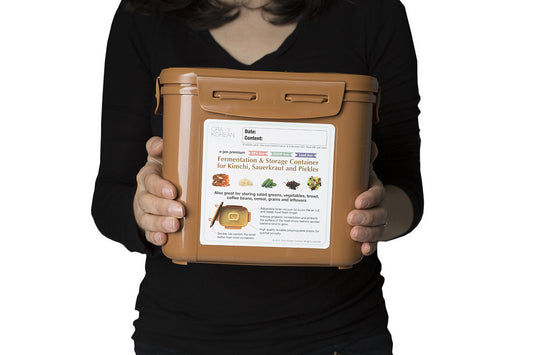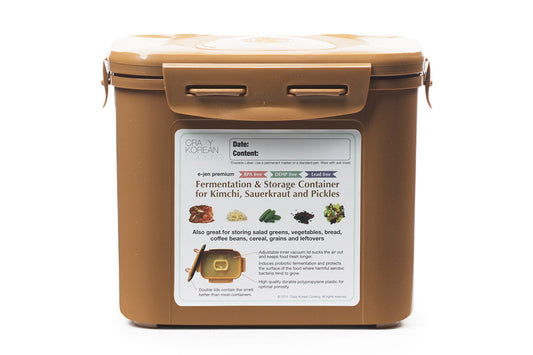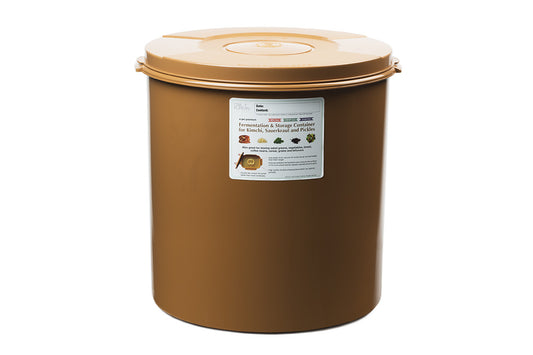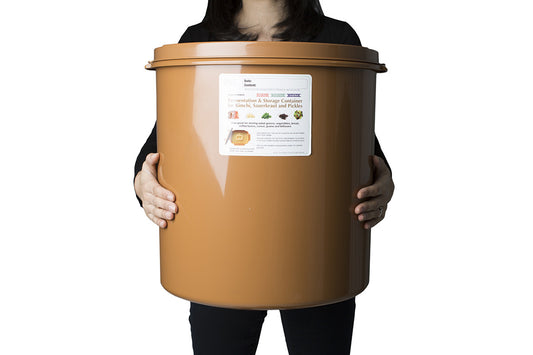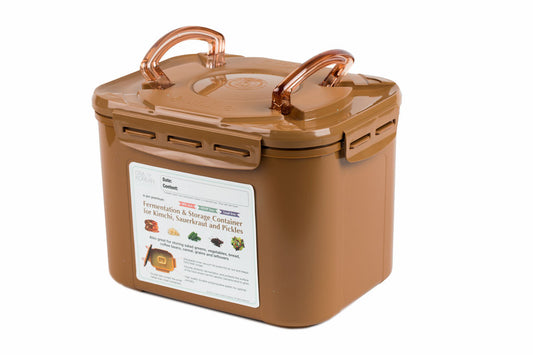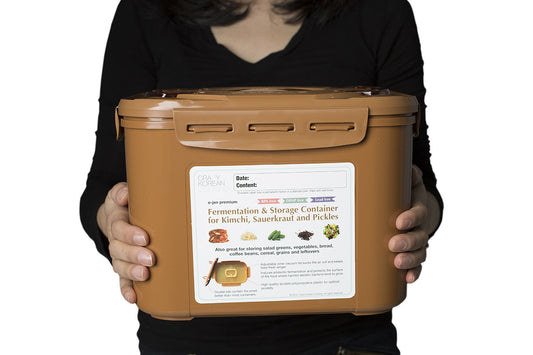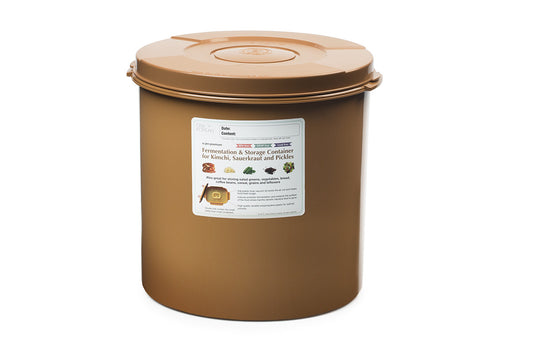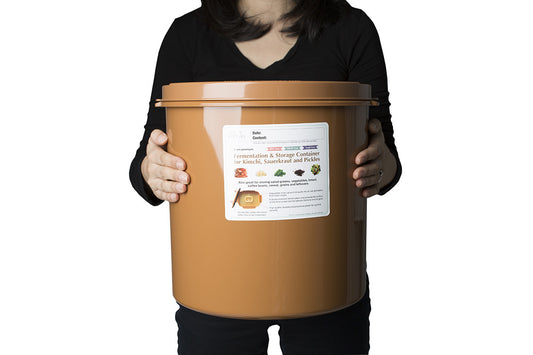Collection: Products
-
Premium Kimchi Container, 1.3 Gal (5.2L) by Crazy Korean Cooking
Vendor:Crazy Korean CookingRegular price $ 28.99Regular priceUnit price / per -
Premium Kimchi Container, 1.6 gallon (6.4L) by Crazy Korean Cooking
Vendor:Crazy Korean CookingRegular price $ 29.99Regular priceUnit price / per -
Premium Kimchi Container, 0.9 Gal (3.4L) by Crazy Korean Cooking
Vendor:Crazy Korean CookingRegular price $ 19.94Regular priceUnit price / per -
Premium Kimchi Container, 0.4 Gal (1.7L) by Crazy Korean Cooking
Vendor:Crazy Korean CookingRegular price $ 16.99Regular priceUnit price / per -
Premium Kimchi Container, 11.8 Gal (45L), Round by Crazy Korean Cooking
Vendor:Crazy Korean CookingRegular price $ 79.99Regular priceUnit price / per -
Premium Kimchi Container, 2.2 Gal (8.5L) by Crazy Korean Cooking
Vendor:Crazy Korean CookingRegular price $ 34.90Regular priceUnit price / per -
Premium Kimchi Container, 5.8 Gal (22L), Round by Crazy Korean Cooking
Vendor:Crazy Korean CookingRegular price $ 59.99Regular priceUnit price / per
